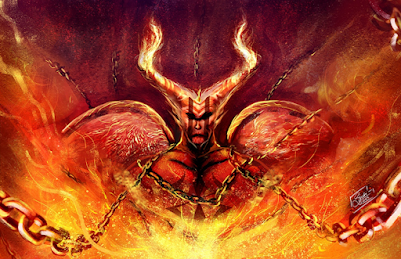What is the Meaning of Moses Horns in Michelangelo Sculpture
The true meaning of Moses' "Horns" in the Sculpture of Michelangelo
The sculpture of Moses by Michelangelo Buonarroti was carved between
the years (1513 – 1515)
The ideals of the Renaissance period
To have a precise idea of what Michelangelo wanted to express in his works
of art, we must know the engine, the source of his inspiration for his art. Like all of his contemporaries, Michelangelo is a product of the Renaissance
period, characterized by the rejection of many of the principles of
medieval knowledge and the admiration of Greco-Roman antiquity. They intended
to recover the classical knowledge in which a new scale of values for the
individual was sought. Faced with a medieval society in which everything
revolved around the idea of God and the Church, during this period of the
Renaissance, man became the center of the universe, used reason as a source of
knowledge, and sought the truth through personal reflection and research.
The essential features of this time, specifically, were the rediscovery of classical Greek and Roman culture, humanism, and anthropocentrism. Renaissance art revolved around the human being, but that did not mean that it ceased to be religious, but in addition to the Church, new patrons would appear, such as wealthy merchants or the monarchy. Due to this new patronage, art ceases to carry out exclusively religious functions. Instead, new genres and themes appear, such as sculptures, portraits, the nude, landscape, or mythological paintings from different cultures, including images of their gods wearing horns on their heads. For example, Hathor, Moloch, and Lucifer, among others.
The Bible says about the people who adore those idols: "Although they knew God, they neither glorified him as God nor gave thanks to him, but their thinking became futile, and their foolish hearts were darkened. Although they claimed to be wise, they became fools and exchanged the glory of the immortal God for images made to look like mortal human beings, birds, animals, and reptiles. (Romans 1:21-23-NIV).
Hathor wears
horns because she is related to the cow, which is the animal that represents
fertility and motherhood. She is the cosmic mother goddess, and when she gave
birth to the sun, she placed it between her horns.
Moloch
One of the best-known horned gods appears in the religion of the Carthaginian, Syrian, and Phoenician peoples. It is about the mighty Moloch, the
Canaanite deity. His representation is usually made with a bronze statue with
fire inside, with the horns of a bull on his head. This horned god demanded the
sacrifice of children in his statues' flames to ensure the lands' fertility. In
this sense, he is one of the darkest history deities. The axis of his worship
occurred in the performance of the Moloch rite, a typical ceremony in which
healthy newborn babies were offered for sacrifice. Babies were thrown into the
bowels of the Moloch statue, where they died. His ashes were kept in vessels and
taken to the temples where he was worshipped. Parents and relatives were
forbidden to mourn, to avoid offending Moloch.
Moses goes up to Mount Sinai for the first time to receive the tablets of the Law and breaks them coming down from the Mount (Exodus 32)
Moses, "The leader of Israel," appears in Michelangelo's sculpture, seated with the Tables of the Law under his arm while his other hand is on his lower abdomen. This representation of Moses projected him when he came down from Mount Sinai the first time he received the Law. After hearing the Words of God telling him to go down because the people he brought out of the land of Egypt had corrupted themselves, he went down to the valley. Moses found them in an orgy worshipping a golden calf image they had made for themselves, honoring it, offering sacrifices to it, and saying, to Israel, that they were their gods that brought them out of the land of Egypt. Moses 'anger burned hot.
At this
crucial moment, Michelangelo imagined Moses as he sculptured him, full of
anger, disappointment, and frustration. His head is turned, concentrated in an
expression of tremendous tension reflected in the robust constitution of his
musculature tense up. His attention narrows and becomes locked onto the target
of his anger. The blood flows and swells his veins. Inside his brain,
neurotransmitter chemicals known as catecholamines are released, causing him to
experience a burst of energy. This burst of energy is behind his angry desire
to take immediate action. At the same time, his heart rate accelerates, his
blood pressure rises, and his rate of breathing increases. His face flushed as increased blood flow entered his limbs and
extremities in preparation for physical action. Soon he can pay attention to
nothing else. Then, in quick succession, additional brain neurotransmitters and
hormones (among them adrenaline and noradrenaline) are released, which trigger
a lasting state of arousal. Now Moses is about to lose
control, which leads him to experience an – intermittent explosive disorder – a sudden episode with impulsive, aggressive,
and violent behavior that impelled him to react with too much exaggeration.
It is not the second time Moses returned from the Mountain that Michelangelo had been the inspiration for his (Moses terribilita) sculpture. Still, it was the first time he returned from the Mount that Michelangelo inspired this sculpture.







Comentarios
Publicar un comentario